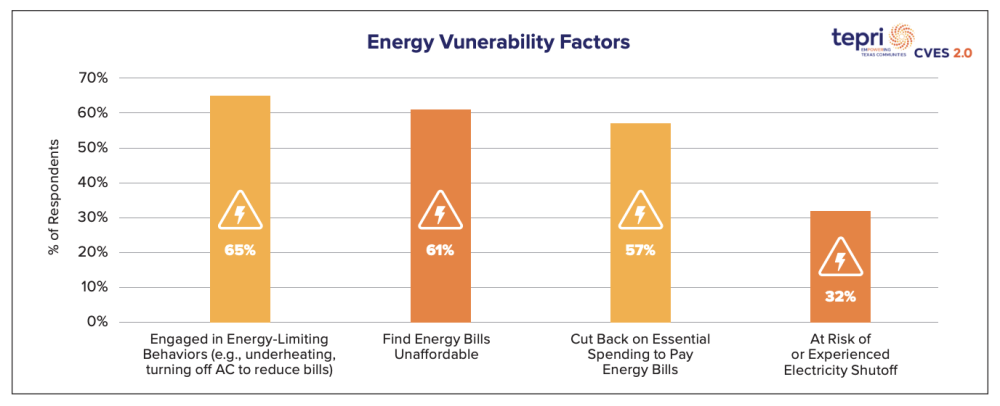Yet as people, businesses and data centers continue to move to the state, Texas leaders need to harness new strategies to make energy more affordable and ensure the state power grid remains reliable, experts said at the Texas Energy Summit, which ran from Nov. 4-6 in Austin.
“We [need to] have a resilient grid for all the extreme weather we're seeing,” Courtney Hjaltman, a commissioner on the Public Utility Commission of Texas, said during a Nov. 5 panel at the summit. “We need to have a resilient grid that deals with cyber attacks and terroristic threats, and we need to have a grid that is ready and able and reliable and competitive and still affordable for the people of Texas.”
The overview
Demand on Texas’ power grid reached a record 85,508 megawatts in August 2023, and the Electric Reliability Council of Texas has estimated it could surpass 150,000 megawatts in 2035. Meanwhile, the EIA anticipates that ERCOT’s electric demand will grow by 14% in 2026 alone, when some large data centers and cryptocurrency mining facilities become operational.

“We have natural gas, we have oil, we have wind, we have solar, and we have all of these things in excess. ... We have a growing population, growing demand and, most importantly, I think culturally, we respect business, we respect private property rights, we respect entrepreneurship and investment,” said Jeff Clark, president and CEO of the Advanced Power Alliance, an association that advocates for the development of “advanced energy technologies” in multiple states.
Zooming in
Amid high inflation nationwide, energy prices are on the rise in Texas and residents are feeling the strain, experts said.
In a June 2025 report, the Texas Energy Poverty Research Institute, a nonprofit research organization, found that 65% of low-income Texans recently engaged in “energy-limiting behaviors,” such as turning off their air conditioning to reduce electric bills or underheating their homes in the winter.

Texas residents pay higher electric bills than residents of many other U.S. states, which Lewin said is a result of inefficient energy use.
“[Texas] consistently rates very low on our energy efficiency programs, and it is very, very hot here,” he said. “So we use a lot of power, and our bills are quite high.”
In 2024, the average Texas resident paid over $165 on their monthly electric bill, EIA data shows.
“This is a salient issue right now—people really care about this. They're seeing the utility bills go up as groceries are going up and everything else is going up,” Lewin said. “So what are we going to do about this? We've got to deal with the affordability problem and we've got to deal with the winter reliability problem.”

In the nearly five years since Winter Storm Uri swept across Texas in February 2021, knocking out power for millions of people and leading to nearly 250 deaths, officials have hardened power plants against extreme weather and added tens of thousands of megawatts of generation capacity to the grid, according to previous Community Impact reporting.
State leaders last asked Texans to reduce their energy use in January 2024—a significant change from 2023, when ERCOT requested conservation 11 times and had one energy emergency, according to agency records. Yet Texas still faces potential issues during cold winter days, Lewin said, due to poorly-insulated homes.
While recent ERCOT reports show that the Texas grid will likely remain stable this winter, conditions could become tight as demand rises. ERCOT set a new winter demand record of 80,525 megawatts in February, and the agency’s models show that during a severe winter storm resulting in similar amounts of demand, there is roughly a 35% chance of a grid emergency this December. That risk falls to less than 10% in January, ERCOT's latest report states.
To minimize these risks, experts said state lawmakers and officials could invest in energy efficiency and residential demand response programs. Under voluntary demand response programs, residential customers can choose to install smart thermostats that can be controlled remotely by their electric provider when demand on the grid is high, according to PUC documents.
“We Texans, we don't want anybody touching our thermostat, so you’ve got to think about innovative ways to make this happen,” ERCOT board chair Bill Flores said Nov. 6. “But it's quick to develop, simple to administer. It can be popular to join, and it's cost-effective.”
Legislative approach
Earlier this year, state lawmakers passed Senate Bill 6, a law aimed at increasing grid reliability and protecting residential customers from power outages by tightening regulations on large electric consumers, such as data centers.
Under the new law, large customers are required to supply backup power that can be used during grid emergencies. As previously reported by Community Impact, customers who use at least 75 megawatts of power, including data centers and industrial projects, will be required to switch to backup generators to reduce strain on the grid in extreme conditions. Large electric customers must also install equipment allowing the state to remotely disconnect power from their facilities, known as a “kill switch” provision.
Lawmakers said in May that these provisions would encourage large companies to rely fully on backup power during emergencies.
“We certainly don't want large-load customers that sometimes are data centers for military operations to just be without power,” Rep. Ken King, R-Canadian, said.
During a Sept. 23 meeting, ERCOT CEO Pablo Vegas told board members that the agency was working with the PUC to create rules to implement SB 6. Those rules are expected to be finalized next year, per agency documents.





